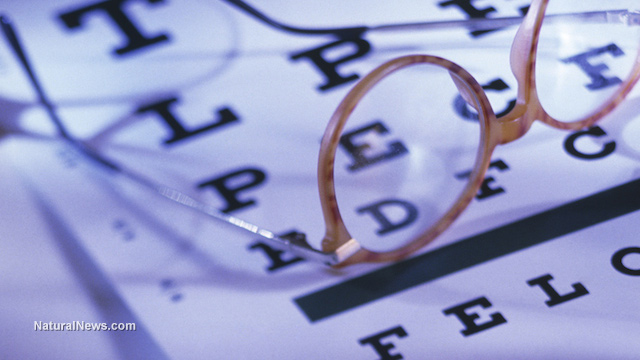Overuse of electronics is causing worldwide epidemic of nearsightedness in children

(NaturalNews) Myopia, or nearsightedness, has been increasing over the past few decades among adults and is showing up more in very young children, even preschool-age kids. It is the inability to focus on objects far away or even just not nearby. Some optometrists and ophthalmologists (eye doctors) think this rising epidemic of myopia can be attributed to electronic displays.
Computers, iPads, cellphones and video games occupy a lot of our time, more now than a few decades ago before nearsightedness escalated. People who are nearsighted tend to have eyeballs that are more egg-shaped than spherical. This characteristic has been associated with a higher risk for other more serious eye diseases such as cataracts, retinal detachment and glaucoma.
Mark Jacquot, an optometrist and clinical director of vision care at LensCrafters, mentions a "major lifestyle shift that's been brewing over the last 30 years... contributing to a reduced ability to focus on things farther away, which is essentially myopia."
Jacquot alludes to the lifestyle of remaining indoors and doing close-up work which has developed increasingly since the 1970s. With the advent of more electronic gadgetry for communication, work and games in the 1980s, the myopia numbers went somewhat exponential.
Considering increases in education as more went into debt with undergraduate and graduate studies, academic study "near work" was preparing young folks for more indoor "near work" in the corporate world. Even non-college attendees were prepped for near work in close quarters with phones and computers for service or sales jobs.
During the early 1970s, 25 percent of 12- to 54-year-old Americans were myopic. By the 2000s, more than 41 percent had the condition. It's gotten to the point that Christine Wildsoet, professor of vision and optometry at the University of California, Berkeley, is having problems finding non-myopic individuals as control subjects for their myopia studies.
Myopia is affecting many more younger children than before. The Berkeley Myopia Control Clinic has seen severe myopia in children as young as four years old. You may have noticed toddlers playing with iPads or hand-held video games in public areas while parents and other adults chatted, or worked on their laptops.
Myopia epidemic worse elsewhere
East Asia schooling starts earlier and lasts longer than American schooling. And it's no secret that they're heavily into hand-held electronic display devices for just about everything. The Singapore military used to screen out myopic recruits and applicants. Now they can't. It would lessen their numbers too much. They even offer laser surgery to some.
In Taiwan, the myopia prevalence among seven-year-olds increased from 5.8 percent in 1983 to 21 percent in 2000. A study there determined that myopia occurrences among seven-year-olds increased from 5.8 percent in 1983 to 21 percent in 2000.
And in South Korea, a large representative study of 19-year-old male conscripts (military draftees) showed that more than 96 percent were myopic in 2010. "So you can pretty much say everybody's myopic" there, quipped professor Wildsoet.
A few ounces of prevention
Increased outdoor activity is the first recommendation. Looking out onto the horizon or at least distant objects is what has decreased during our international myopia epidemic. So it's wise to practice looking away while being outdoors more. Or at least looking out from inside through a window with a distant view.
Kids should be encouraged to play outside more. "If we can encourage kids to stay outdoors as much as they can, that itself serves as a very good protective mechanism for faster progression," said Dr. Maria Liu, OD, PhD, and head of Berkeley's Myopia Control Clinic.
For adults working in small cubicle computer stations, there is Jacquot's "20-20-20" rule: For every 20 minutes of close-up activity, look at something about 20 feet away for about 20 seconds. "It can give your eyes a little bit of a break; it of course gives your mind a bit of a break, too," suggested Jacquot.
Vitamins, herbs and other supplements for eye health are explained further here.
Sources for this article include
http://www.wtop.com
http://synapse.princeton.edu[PDF]
http://www.ncbi.nlm.nih.gov
http://www.raysahelian.com
Learn more: http://www.naturalnews.com/052706_nearsightedness_electronic_devices_myopia.html#ixzz3xvoJiw85


